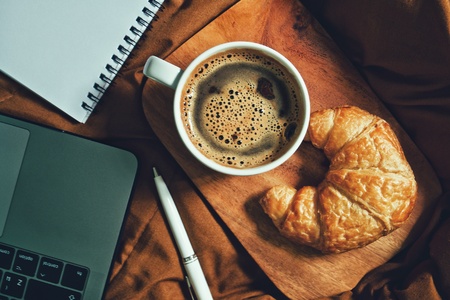Introduction to Pour Over Coffee in Britain
The British have long been synonymous with tea, yet over recent years, there has been a remarkable surge in the popularity of specialty coffee across the UK. Among various brewing methods, pour over coffee has found a unique place within British coffee culture. Traditionally, coffee in Britain was often associated with instant blends or cafetière (French press) styles. However, as local roasteries and independent cafés began championing hand-crafted approaches, pour over techniques—once considered niche—have become increasingly mainstream. This manual brewing method aligns well with the British appreciation for ritual and quality, offering both control and clarity of flavour that resonates with discerning palates. In this context, understanding the impact of water temperature and kettle design is crucial; these factors are not just technical details but essential elements shaping the distinct experience of British pour over coffee.
2. Understanding Water Temperature: Science and Taste
Water temperature is a fundamental variable in the pour over coffee process, directly influencing extraction rates and the resulting flavour profiles. In the context of British coffee culture, where preferences often lean towards balanced, nuanced brews rather than overly acidic or bitter cups, understanding the science behind water temperature becomes essential.
When hot water passes through ground coffee, it extracts soluble compounds at varying rates depending on the temperature. Too cool, and the coffee may taste under-extracted—thin, sour, or lacking in complexity. Too hot, and it risks over-extraction, yielding harsh, bitter notes that mask subtle flavours cherished by discerning British palates. The ideal range for most pour over methods is widely considered to be between 90°C and 96°C; however, even within this bracket, small adjustments can bring out different characteristics in the cup.
| Temperature (°C) | Extraction Result | Typical Flavour Profile |
|---|---|---|
| 85-89 | Under-extracted | Sour, light-bodied, muted aroma |
| 90-92 | Balanced extraction | Mild acidity, delicate sweetness, clarity in taste |
| 93-96 | Full extraction | Rich body, enhanced sweetness and complexity |
| >97 | Over-extracted | Bitter, astringent, overpowering flavours |
The British approach to pour over coffee often seeks a harmony between brightness and smoothness. This means many home brewers experiment with temperatures around 91–94°C to achieve a cup that’s both lively and easy-drinking—a style that pairs well with traditional British pastries or an afternoon tea break. Ultimately, precise control over water temperature allows for consistent results and customisation according to personal or regional preferences.

3. Traditional Kettles vs. Modern Gooseneck Kettles
For many British households, the image of a classic stainless steel or electric kettle is as familiar as the morning cup of tea. These traditional kettles, with their broad spouts and robust build, are designed for efficiency and volume rather than precision. In the context of making pour over coffee, however, the type of kettle used can significantly impact the brewing process and ultimately the flavour profile of the cup.
Traditional British kettles excel at boiling water quickly for multiple cups, but they tend to pour in wide, uncontrolled streams. This makes achieving the slow, even saturation required for a quality pour over challenging, especially when aiming for consistency in extraction. The lack of pouring control may result in uneven grounds agitation and unpredictable water distribution, which can cause under-extraction or over-extraction in certain areas of the coffee bed.
By contrast, modern gooseneck kettles—often seen in specialty coffee shops and increasingly available in UK retail—offer a thin, curved spout designed specifically for accuracy. The gooseneck enables precise control over both flow rate and direction, allowing coffee enthusiasts to perform delicate circular pours and evenly saturate all grounds. This level of control is essential for unlocking nuanced flavours and achieving repeatable results, particularly important as pour over methods become more popular across Britain’s growing home-brew community.
The shift towards gooseneck kettles signifies a broader appreciation for technique within British coffee culture. While traditional kettles remain beloved for their practicality and heritage value, those seeking to elevate their home coffee experience will find that investing in a gooseneck model provides greater command over extraction variables—most notably when coupled with accurate temperature control features found on some modern designs.
4. The Ritual: Brewing Up the British Way
In the UK, making pour over coffee is more than just a method—its a daily ritual rooted in precision and comfort. The British approach to pour over brewing reflects an appreciation for both the technical and social aspects of coffee preparation. While tea still holds a prominent place in British culture, specialty coffee has steadily gained ground, and the ritual of brewing has evolved accordingly.
Timing and Methods: A Matter of Routine
British coffee enthusiasts often prefer pour over methods for their clarity of flavour and control. Timing is crucial; many follow a structured routine to achieve consistency. Typically, the process involves:
| Step | Average Time (Minutes) | Common Tools Used |
|---|---|---|
| Boiling Water | 2-3 | Kettle (Electric or Stovetop) |
| Blooming Coffee Grounds | 0.5-1 | Chemex, V60, or Similar Dripper |
| Main Pour | 2-3 | Kettle with Gooseneck Spout (Preferred) |
| Total Brew Time | 4.5-7 | – |
This attention to timing ensures that each cup meets personal taste preferences and maintains a sense of tradition.
The Kettle’s Place in the British Home
No kitchen in Britain is complete without a kettle. Whether electric or stovetop, the kettle serves as a centrepiece for hot beverage preparation, bridging generations and habits. For pour over coffee, the gooseneck kettle is especially favoured for its precise pouring ability, allowing for even extraction—a detail not lost on meticulous brewers.
The Social Aspect of Brewing
The act of preparing pour over coffee often doubles as a moment of connection—either with oneself or others. Many households have integrated coffee brewing into their daily schedules, using it as an opportunity to pause, reflect, or catch up with family and friends. This blend of careful technique and communal spirit encapsulates the British way of enjoying pour over coffee.
5. Common Mistakes and Best Practices
When brewing pour over coffee in a typical British kitchen, certain missteps often undermine the final cup. One frequent pitfall is using water that is either too hot or not hot enough; boiling water from a standard electric kettle can scald the grounds, while letting it cool for too long before pouring results in under-extraction and flat flavours. Another common issue is neglecting to preheat the kettle or the carafe, which can cause significant temperature loss during brewing, particularly in colder UK homes.
Poor Control Over Pouring Technique
Many British households use basic electric kettles without gooseneck spouts, making it tricky to achieve a steady, controlled pour. This leads to uneven saturation of the coffee bed and inconsistent extraction. Pouring too quickly or only in one spot can create channels through the grounds, causing some areas to be over-extracted and others under-extracted.
Best Practice: Mindful Temperature Management
For optimal results, aim for water just off the boil—around 92-96°C. If your kettle lacks a temperature gauge, allow it to come off the boil and rest for 30 seconds before pouring. Preheating your brewing vessel with a splash of hot water is also an easy way to maintain temperature stability throughout the process.
Best Practice: Adapt Your Equipment
If a gooseneck kettle isn’t available, practise slow and gentle pouring with your regular kettle by holding it closer to the brew cone and tilting gradually. You might also consider decanting boiled water into a measuring jug with a spout for more control—a practical workaround in many British kitchens.
Consistency Is Key
The best cups are produced when you keep variables as consistent as possible: grind size, water-to-coffee ratio, and timing all play vital roles. Even if you’re working with modest equipment, keeping a simple kitchen timer handy and weighing your coffee can help you dial in your method and develop repeatable results tailored to your taste.
6. Conclusion: Embracing Innovation While Honouring Tradition
Pour over coffee has found a special place within the British coffee scene, sitting comfortably alongside the much-loved tradition of tea and the classic cafetière. As we have explored, water temperature and kettle choice play an integral role in achieving that perfect brew, but their significance stretches beyond mere technicalities. In Britain, where rituals and routines are cherished, every detail—be it the gentle whistle of a stovetop kettle or the precision of a modern gooseneck—adds meaning to the experience.
Embracing innovation does not mean abandoning what makes British coffee culture unique. Instead, it offers an opportunity for mindful exploration. Experimenting with variable temperature kettles or adjusting your brewing technique can help reveal new layers of flavour, while still honouring the comforting familiarity of British customs—sharing a cup with friends, enjoying a quiet moment by the window, or setting aside time for a midday pause.
The key lies in striking a balance: blending the best of contemporary methods with the warmth and hospitality that define British life. Whether you’re fine-tuning your water temperature to highlight floral notes in an Ethiopian roast or simply pouring from your trusty old kettle, each cup becomes a celebration of both progress and tradition.
Ultimately, pour over coffee in Britain is about curiosity as much as it is about comfort. By remaining open to new techniques while respecting time-honoured practices, coffee enthusiasts can cultivate a richer, more rewarding daily ritual—one that pays homage to the past even as it welcomes the future.


